Choosing The Best Wood Clamp For Your Project
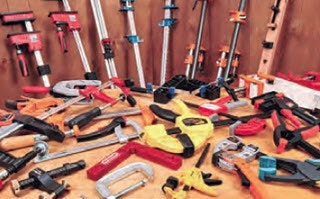
You can never have too many clamps, but no one clamp is perfect for every project. The clamp you need depends on the task you are trying to accomplish. Here are common woodworking tasks and the best clamps for each application.
Application: Edge Gluing Panels
Bar or pipe clamps are the best option for edge gluing panels. These clamps feature a bar or pipe that provides enough length to span the width of the glue up. The bar or pipe also provides A support for the panels. These clamps come in a variety of types:
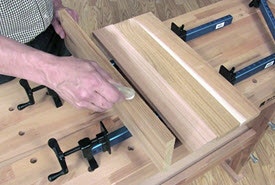
Aluminum Bar Clamps are lightweight making them easy to handle and provides a wide stable base.
Pipe Clamps are an economical option that you can modify to reach different lengths. These clamps are typically sold as a set of jaws and then you purchase whatever length of pipe you need to thread to the jaws.
Shop Bar & Pipe Clamps
Application: Face Gluing
If you’re face gluing parts to create a table leg, turning blank or a bend lamination an F-Style clamp is often your best bet.
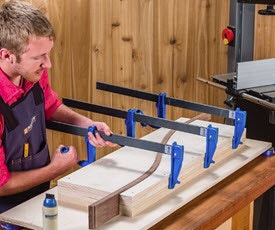
F-Style clamps are available in a variety of jaw depths that extend the point of force further from the edge of the workpiece.
F-Style piston clamps are a great option if you have difficulty griping clamp panels. It features a handle that swivels 90 degrees making it easier to grip and creating more leverage.
Shop F-Style Clamps
Application: Assembling Cabinets
When you’re assembling cabinet boxes or face frames. Parallel jaw clamps are great a great choice.
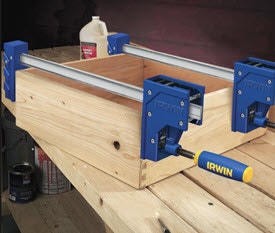
Parallel jaw clamps feature a pair of jaws that remain parallel and distribute even pressure across the entire face of the clamps jaw.
Another important consideration when making boxes is to keep the parts perpendicular. In these cases a set of assembly squares and clamps are very helpful. An assembly square is simply a right angle jig that you clamp in the corner of two joint pieces to keep them perpendicular.
Attaching Edge Banding
Attaching solid wood edging to a panel is a common task when working with sheet goods. Bandy clamps make this task super easy.
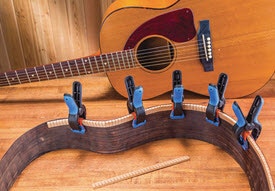
Bandy clamps are spring clamps that feature large grippy clamp pads that won’t slip and a touch rubber band that stretches between the jaws. Their also great for holding cables out of your way.
Securing Jigs & Work Pieces
Woodworkers often need to secure parts or jigs to a work bench, tool surface or directly to a workpiece.
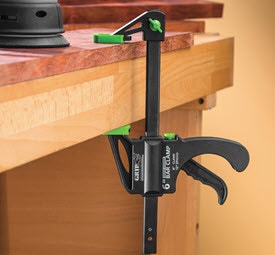
Pistol quick grip clamps are easy to attach, adjust, remove and hold work securely.

Hold downs are a traditional method of holding a workpiece to the work bench using its dog holes. A modern version of the hold down is the T-Track hold down clamp which offers additional adjustability.

Handscrew Clamps – if you need to hold a work piece on edge, a wood screw clamp that is clamped to your bench created a makeshift vice.

Toggle Clamps – If you make your own jigs or shop fixtures, toggle clamps are the ticket for securing small workpieces. They come in a variety of sizes and styles that either push out or down.
Clamping around parts

When you need to wrap around an assembly such as a box with mitered corners or segmented or staved cylinder. A ratcheting band clamp is your best bet
That’s more than a dozen examples and we’ve barely scratched the surface in terms of the variety of specialty clamps that are available for unique project challenges for example; drawer face installation clamps won’t help you clamp up a panel but it sure makes it easy to align and secure drawer fronts without all the trial and error.
The next time you’re working on a project and wish you had a third arm, longer reach or more strength, take a spin through the clamps department to find the help you’re looking for.
Keep the inspiration coming!
Subscribe to our newsletter for more woodworking tips and tricks



